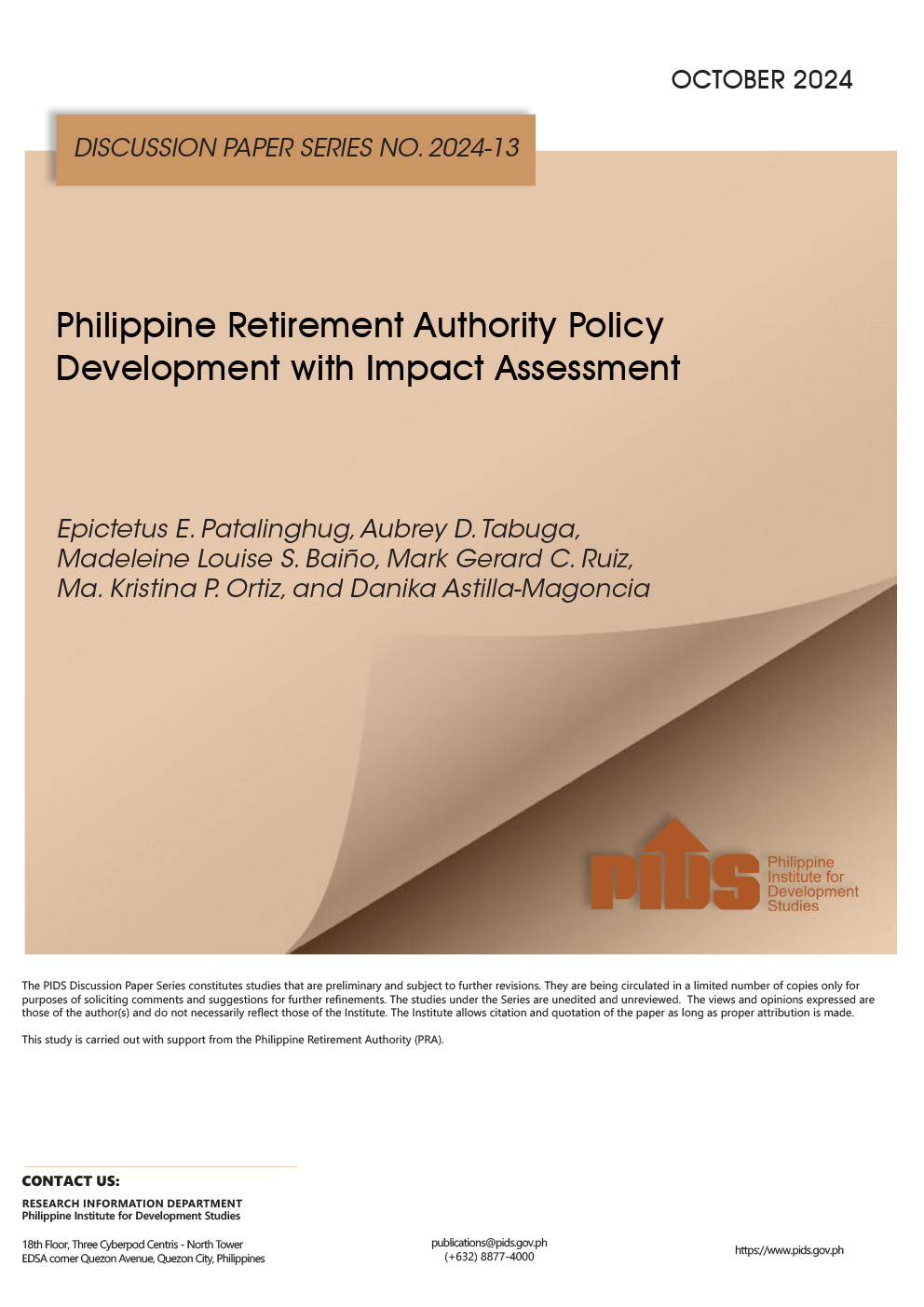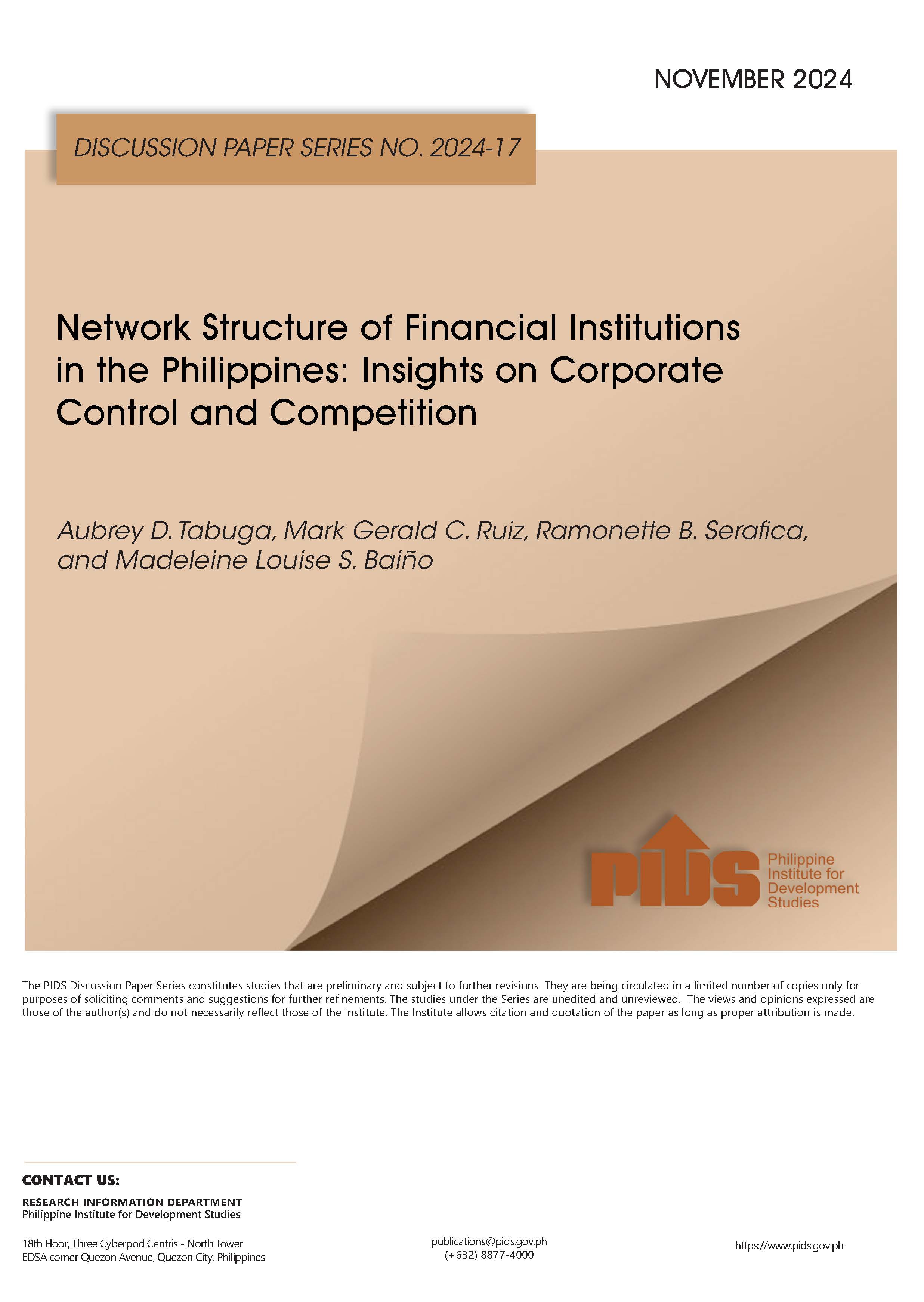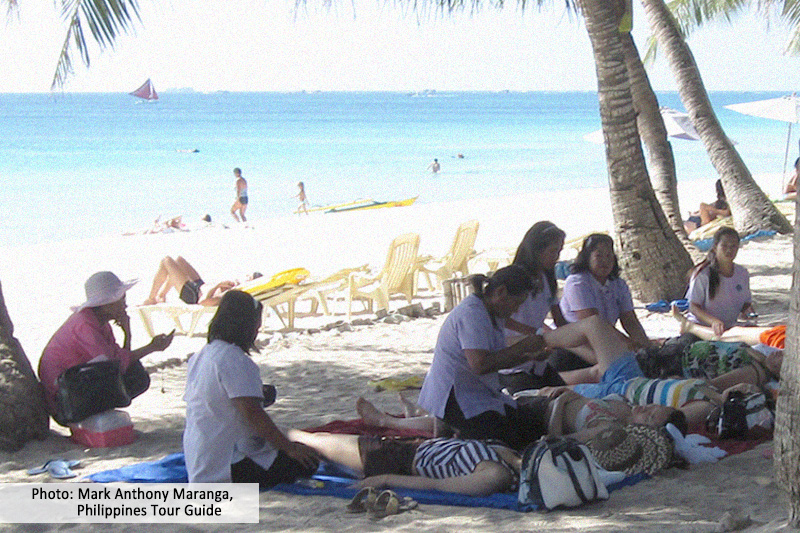Amid rising poverty and hunger, Duterte, instead of spending more cash, whips out the lash. Instead of compassion, ordinary people are put in prison. Already, the Philippines imposed the longest and most stringent lockdown yet but the pandemic is still rising.
A new SWS survey shows that an estimated 5.2 million Filipino families or 20.9% of Filipinos found themselves without food to eat at least once in the past 3 months during the lockdown. The survey also showed a trend of rising hunger, up by a total of 12.1 points from 8.8% in December 2019, with severe hunger registering a high 5.1% of Filipinos.
This comes in the heels of an SWS survey where 83% of Filipinos reported a decline in quality of life compared a year ago. With 16.6% of the population living below the poverty line in 2018, this is expected to rise to 2015 levels of 21.3% or higher. Government data showed that 44% of workers lost their jobs two months after the lockdown. Studies project that the pandemic’s effects on lost jobs and income would increase household poverty by 7.2 percentage points.
Unemployment rose to a record-high 17.7% in April 2020, accounting for 7.3 million unemployed Filipinos. This was higher than the 5.1% unemployment rate recorded in April 2019 and this figure cuts across all regions reporting double-digit unemployment rates.
The economy is projected to lose up to 2.5 trillion pesos due to the pandemic, according to the Philippine Institute for Development Studies (PIDS). UK-based Oxford Economics estimates that the country’s loss of output as of May is worth 5.8% of GDP, the highest among ASEAN 5 countries, while GDP this year will contract by 6.9% or same level in 1985.
These bleak figures are bringing down expectations for a robust economic rebound next year and up to Duterte’s last year in office. According to ING Bank forecasts, the economy is expected to contract by 6.3% in the second quarter this year, and to continue shrinking to 5.8% for the 3rd quarter, and 3.5% in the final 3 months. By 2021, growth will speed up to 5.7% in the second quarter, before slowing down to 4.5% in fourth quarter. In 2022, GDP is not seen to grow beyond 5.1%.
A large part of the dismal projection rests on a weaker household consumption crippled by a bleak job market and rising joblessness. The number of jobless people and job losses will continue to mount forcing consumers to cut back on spending and dig into their savings to pay up deferred loan payments and rising debts.
Household consumption accounts for as much as 70% of GDP. COVID-19 has severely impacted household consumption with empty shopping malls; restaurants losing dine-in customers and having limited delivery; "tourist-less" destinations and vacations put on hold; and fewer remittances. Economic recovery is therefore not on the horizon.
Investments are also unlikely to gain traction even with record-low interest rates cut by the BSP, including reserve requirement cuts for commercial and rural banks to boost lending. Private sector spending will be constrained though business has to take on added costs as a given. DTI reported last July 16 that 26% of businesses, many SMSEs, have closed as a result of the pandemic, further eroding confidence for immediate recovery.
Even before the pandemic struck, FDIs have dropped by 33% for the past 10 months as of January 2020. Net FDIs amounted to $7.6 billion in 2019, 23.1% lower than the $9.9 billion netted in 2018. With the pandemic, the BSP recently cut its net FDI estimate for 2020 from $8.8 billion to $4.1 billion.
The Philippine Statistics Authority reported that the country’s total merchandise trade still registered a decline of 38.7% in May 2020, after a steep 59.5% decline in April 2020. Imports though fell by 40.6% but slower contractions are noted in capital goods, raw materials including chemicals and manufactured goods, and consumer goods as the economy reopened. Severely contracting imports suggest lack of demand for capital and consumer products that are necessary for economic growth recovery.
The only favorable sign so far is the Philippines gaining favorable credit ratings, unlike many countries that have been downgraded due to COVID-19. This development allowed the Philippines to access loans at relatively low interest rates, helping free up resources to fund social amelioration, subsidies and other emergency measures to mitigate the pandemic’s impact on people and the economy.
In its report, Fitch Solutions cited government’s strong fiscal position providing a buffer against a rise in public indebtedness due to shocks, like the coronavirus pandemic. However, it warned that markets are spooked by regulatory measures that bring down businesses, obviously referencing the ABS-CBN shutdown.
The country also generated a BOP surplus of $3.688B in the first 5 months of the year, mainly due to slower imports and external payments amid shrinking global demand as well as more loan proceeds coming in. This also contributed to a higher GIR, rising to $93.3 billion in May, up 9.3% from $85.4 billion in 2019 and projected to be higher by end of the year. But these dollar reserves only add up to "idle funds" and growing liquidity.
Weak imports, in turn, further strengthened the peso. A strong currency is not good for the already weak exports sector, and OFW families that get less for a dollar received. Remittances for this year are expected to contract by at least 5%, with 250,000 OFWs losing jobs.
With the pandemic, revenue collection from taxes and other sources drastically dropped by 16.7% from the revenue-to-GDP collection in 2019, which was the highest in 22 years. Revenue targets have been revised to P1.7-T for 2020, a decrease from the P2.18-T and P1.95-T collected in 2019 and 2018, respectively.
Government spending will be at 21.7% of GDP or 10% higher than 2019 spending. The debt-to-GDP ratio would increase by at least 8.1% this year, breaching a little under the 50% mark, which is a dramatic increase from 41.5 percent in 2019.
Compared to the pandemic response of other ASEAN 5 countries – the Philippines having the highest mortality rate and COVID-19 cases – ours is the lowest at US$19.83-B. Vietnam will be spending around US$26.4-B stimulus package, Indonesia at least US$48-B, Thailand (US$59.7-B), and Malaysia US$68-B (around 20% of GDP).
While our so-called economic fundamentals are strong, our COVID-19 stimulus response is very weak and stingy. A budget surplus posted in June 2020 due to surge in tax payments only shows how hesitant government is on spending, more out of fear to damage its investment-grade rating than weak capacity.
Analysts have flagged down ramping up spending on big-ticket infrastructure projects for economic recovery. With rising COVID-19 cases and mobility issues in the foreseeable future, the viability of big-ticket projects is questionable. Along with debt payments, these become "subsidies" that would crowd out scarce public resources for pandemic-related investments.
Instead, government should address the immediate health-related needs of our people, including food subsidies to stave off widespread hunger. Two economic recovery measures worth P2.8-T (US$56-B) passed by the House of Representatives were dismissed, citing lack of funding. Only P140-B (US$2.8-B) is proposed but this won’t be enough to create jobs or boost consumption spending.
Duterte does not lack the political muscle to increase spending, but won't do so. Instead, he ramped up authoritarian measures to quell dissent and use militaristic solutions in fighting a health pandemic that is turning for the worse.
Duterte’s policies mean sacrificing lives of the poor so as not to offset strong economic fundamentals. Putting it bluntly, a rise of 7.2% in poverty incidence or a fifth of our population mired in extreme hunger and poverty is a small price for him to stay in power. – Rappler.com
A new SWS survey shows that an estimated 5.2 million Filipino families or 20.9% of Filipinos found themselves without food to eat at least once in the past 3 months during the lockdown. The survey also showed a trend of rising hunger, up by a total of 12.1 points from 8.8% in December 2019, with severe hunger registering a high 5.1% of Filipinos.
This comes in the heels of an SWS survey where 83% of Filipinos reported a decline in quality of life compared a year ago. With 16.6% of the population living below the poverty line in 2018, this is expected to rise to 2015 levels of 21.3% or higher. Government data showed that 44% of workers lost their jobs two months after the lockdown. Studies project that the pandemic’s effects on lost jobs and income would increase household poverty by 7.2 percentage points.
Unemployment rose to a record-high 17.7% in April 2020, accounting for 7.3 million unemployed Filipinos. This was higher than the 5.1% unemployment rate recorded in April 2019 and this figure cuts across all regions reporting double-digit unemployment rates.
The economy is projected to lose up to 2.5 trillion pesos due to the pandemic, according to the Philippine Institute for Development Studies (PIDS). UK-based Oxford Economics estimates that the country’s loss of output as of May is worth 5.8% of GDP, the highest among ASEAN 5 countries, while GDP this year will contract by 6.9% or same level in 1985.
These bleak figures are bringing down expectations for a robust economic rebound next year and up to Duterte’s last year in office. According to ING Bank forecasts, the economy is expected to contract by 6.3% in the second quarter this year, and to continue shrinking to 5.8% for the 3rd quarter, and 3.5% in the final 3 months. By 2021, growth will speed up to 5.7% in the second quarter, before slowing down to 4.5% in fourth quarter. In 2022, GDP is not seen to grow beyond 5.1%.
A large part of the dismal projection rests on a weaker household consumption crippled by a bleak job market and rising joblessness. The number of jobless people and job losses will continue to mount forcing consumers to cut back on spending and dig into their savings to pay up deferred loan payments and rising debts.
Household consumption accounts for as much as 70% of GDP. COVID-19 has severely impacted household consumption with empty shopping malls; restaurants losing dine-in customers and having limited delivery; "tourist-less" destinations and vacations put on hold; and fewer remittances. Economic recovery is therefore not on the horizon.
Investments are also unlikely to gain traction even with record-low interest rates cut by the BSP, including reserve requirement cuts for commercial and rural banks to boost lending. Private sector spending will be constrained though business has to take on added costs as a given. DTI reported last July 16 that 26% of businesses, many SMSEs, have closed as a result of the pandemic, further eroding confidence for immediate recovery.
Even before the pandemic struck, FDIs have dropped by 33% for the past 10 months as of January 2020. Net FDIs amounted to $7.6 billion in 2019, 23.1% lower than the $9.9 billion netted in 2018. With the pandemic, the BSP recently cut its net FDI estimate for 2020 from $8.8 billion to $4.1 billion.
The Philippine Statistics Authority reported that the country’s total merchandise trade still registered a decline of 38.7% in May 2020, after a steep 59.5% decline in April 2020. Imports though fell by 40.6% but slower contractions are noted in capital goods, raw materials including chemicals and manufactured goods, and consumer goods as the economy reopened. Severely contracting imports suggest lack of demand for capital and consumer products that are necessary for economic growth recovery.
The only favorable sign so far is the Philippines gaining favorable credit ratings, unlike many countries that have been downgraded due to COVID-19. This development allowed the Philippines to access loans at relatively low interest rates, helping free up resources to fund social amelioration, subsidies and other emergency measures to mitigate the pandemic’s impact on people and the economy.
In its report, Fitch Solutions cited government’s strong fiscal position providing a buffer against a rise in public indebtedness due to shocks, like the coronavirus pandemic. However, it warned that markets are spooked by regulatory measures that bring down businesses, obviously referencing the ABS-CBN shutdown.
The country also generated a BOP surplus of $3.688B in the first 5 months of the year, mainly due to slower imports and external payments amid shrinking global demand as well as more loan proceeds coming in. This also contributed to a higher GIR, rising to $93.3 billion in May, up 9.3% from $85.4 billion in 2019 and projected to be higher by end of the year. But these dollar reserves only add up to "idle funds" and growing liquidity.
Weak imports, in turn, further strengthened the peso. A strong currency is not good for the already weak exports sector, and OFW families that get less for a dollar received. Remittances for this year are expected to contract by at least 5%, with 250,000 OFWs losing jobs.
With the pandemic, revenue collection from taxes and other sources drastically dropped by 16.7% from the revenue-to-GDP collection in 2019, which was the highest in 22 years. Revenue targets have been revised to P1.7-T for 2020, a decrease from the P2.18-T and P1.95-T collected in 2019 and 2018, respectively.
Government spending will be at 21.7% of GDP or 10% higher than 2019 spending. The debt-to-GDP ratio would increase by at least 8.1% this year, breaching a little under the 50% mark, which is a dramatic increase from 41.5 percent in 2019.
Compared to the pandemic response of other ASEAN 5 countries – the Philippines having the highest mortality rate and COVID-19 cases – ours is the lowest at US$19.83-B. Vietnam will be spending around US$26.4-B stimulus package, Indonesia at least US$48-B, Thailand (US$59.7-B), and Malaysia US$68-B (around 20% of GDP).
While our so-called economic fundamentals are strong, our COVID-19 stimulus response is very weak and stingy. A budget surplus posted in June 2020 due to surge in tax payments only shows how hesitant government is on spending, more out of fear to damage its investment-grade rating than weak capacity.
Analysts have flagged down ramping up spending on big-ticket infrastructure projects for economic recovery. With rising COVID-19 cases and mobility issues in the foreseeable future, the viability of big-ticket projects is questionable. Along with debt payments, these become "subsidies" that would crowd out scarce public resources for pandemic-related investments.
Instead, government should address the immediate health-related needs of our people, including food subsidies to stave off widespread hunger. Two economic recovery measures worth P2.8-T (US$56-B) passed by the House of Representatives were dismissed, citing lack of funding. Only P140-B (US$2.8-B) is proposed but this won’t be enough to create jobs or boost consumption spending.
Duterte does not lack the political muscle to increase spending, but won't do so. Instead, he ramped up authoritarian measures to quell dissent and use militaristic solutions in fighting a health pandemic that is turning for the worse.
Duterte’s policies mean sacrificing lives of the poor so as not to offset strong economic fundamentals. Putting it bluntly, a rise of 7.2% in poverty incidence or a fifth of our population mired in extreme hunger and poverty is a small price for him to stay in power. – Rappler.com








